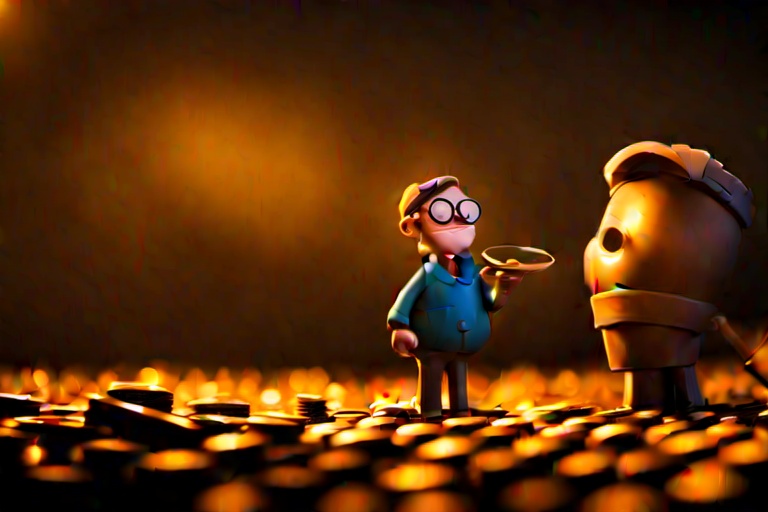Coin collecting is a dynamic hobby filled with nuances that appeal to both the historian and the treasure hunter within us. One particularly alluring category in this field is the study and acquisition of doubled die obverse coins. This type of error coin harbors a unique allure due to its exceptional characteristics and the fascinating errors that lead to its creation. What follows is an in-depth exploration into the world of doubled die coins, their creation process, value determinants, and how to differentiate them from other double-imaged coins.
Coin collecting is a dynamic hobby filled with nuances that appeal to both the historian and the treasure hunter within us. One particularly alluring category in this field is the study and acquisition of doubled die obverse coins. This type of error coin harbors a unique allure due to its exceptional characteristics and the fascinating errors that lead to its creation. What follows is an in-depth exploration into the world of doubled die coins, their creation process, value determinants, and how to differentiate them from other double-imaged coins.
The Process Behind Doubled Die Obverses
In order to understand what makes a doubled die obverse coin so unique, it's essential to delve into the minting process. Such coins come into existence as a result of inadvertent mistakes during the die-making phase. Mints around the world utilize hubs and dies to produce coins. A hub bears the negative of the coin's design and is traditionally used to create the die, which will, in turn, actually strike the coins. The usage of a hub, alongside a CNC milling machine, is a pivotal step in the die-making process.
A doubled die occurs when there is a misalignment in the setup of the hub and the die. This error can cause the hub to imprint an additional, slightly misaligned image onto the die. Consequently, when coins are struck using this flawed die, they display duplicate elements – such as images, letters, or numbers – giving rise to the remarkable aspect of doubled dies.
Valuing Doubled Die Obverse Coins
When it comes to determining the value of such coins, there are a few critical factors to consider. These include the degree of doubling, the condition of the coin, and its overall rarity in circulation. Coins with pronounced doubling are generally more valuable than those with only minimal doubling. The condition of the coin is also paramount; those in pristine, uncirculated condition often reach higher prices compared to well-circulated examples.
One iconic doubled die obverse coin is the 1955 Lincoln wheat cent, renowned amongst collectors for its clear doubling, especially evident on the date and phrases like "Liberty" and "In God We Trust". Exceptional specimens of this cent can command high prices. It's important to be aware, though, that counterfeits of rare coins like the 1955 DDO (Doubled Die Obverse) Lincoln wheat cent do exist. It is always best practice to seek out versions of this coin that have been graded and authenticated by reliable, third-party grading services to ensure you're acquiring a genuine piece.
Differentiating Doubled Dies from Similar Errors
Distinguishing a true doubled die coin from other types of doubling, such as those seen on double struck coins or ejection doubled coins, requires a keen eye. Double struck coins are created when a coin is impacted more than once by the dies during the minting process. This can lead to a more flattened appearance where the first impression of an image, letter, or word is concerned. Doubled die coins will have both sets of impressions raised and sharply defined.
Ejection doubled coins, on the other hand, are typically the result of a mechanical error during the ejection of the coin from the press. This improper adjustment causes smearing that can mimic doubling, but upon closer inspection, the defects tend to be irregular and restricted to certain areas, unlike the consistent doubling found across a genuine doubled die coin.
The Appeal of Doubled Die Obverse Coins
Collecting doubled die obverse coins is not just about owning a piece of numismatic oddity; it's about engaging with a tangible piece of minting history. Each error tells a story and adds a layer of intrigue to a collection, making these unique coins a centrepiece for conversation and study. Whether you're a veteran numismatist or someone who has recently discovered the joy of coin collecting, hunting for doubled die obverse coins can provide both joy and the potential for a valuable find.
For collectors and enthusiasts, the doubled die obverse represents more than just a minting mistake – it's a testament to the careful craftsmanship and occasional imperfections that go hand-in-hand with coin production. Collecting such pieces draws us closer to appreciating the intersection of artistry and error, giving us a broader view of how a tiny piece of metal can encapsulate such expansive tales of history and human endeavor.
As we wrap up our dive into the world of doubled die obverse coins, it's clear that there's a rich tapestry of knowledge and excitement to be uncovered within this niche. The intrigue of these coins, coupled with the comprehensive details now at your disposal, sets the stage for a compelling collecting journey. Whether for their potential value or the sheer thrill of the hunt, doubled die obverse coins remain a captivating aspect of coin collecting, offering both novices and experts alike a hobby filled with discovery and historical significance.
Information for this article was gathered from the following source.

